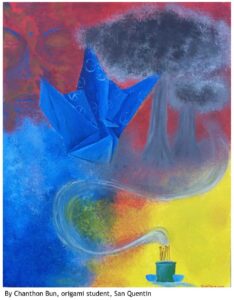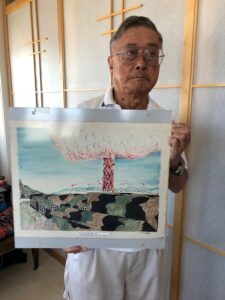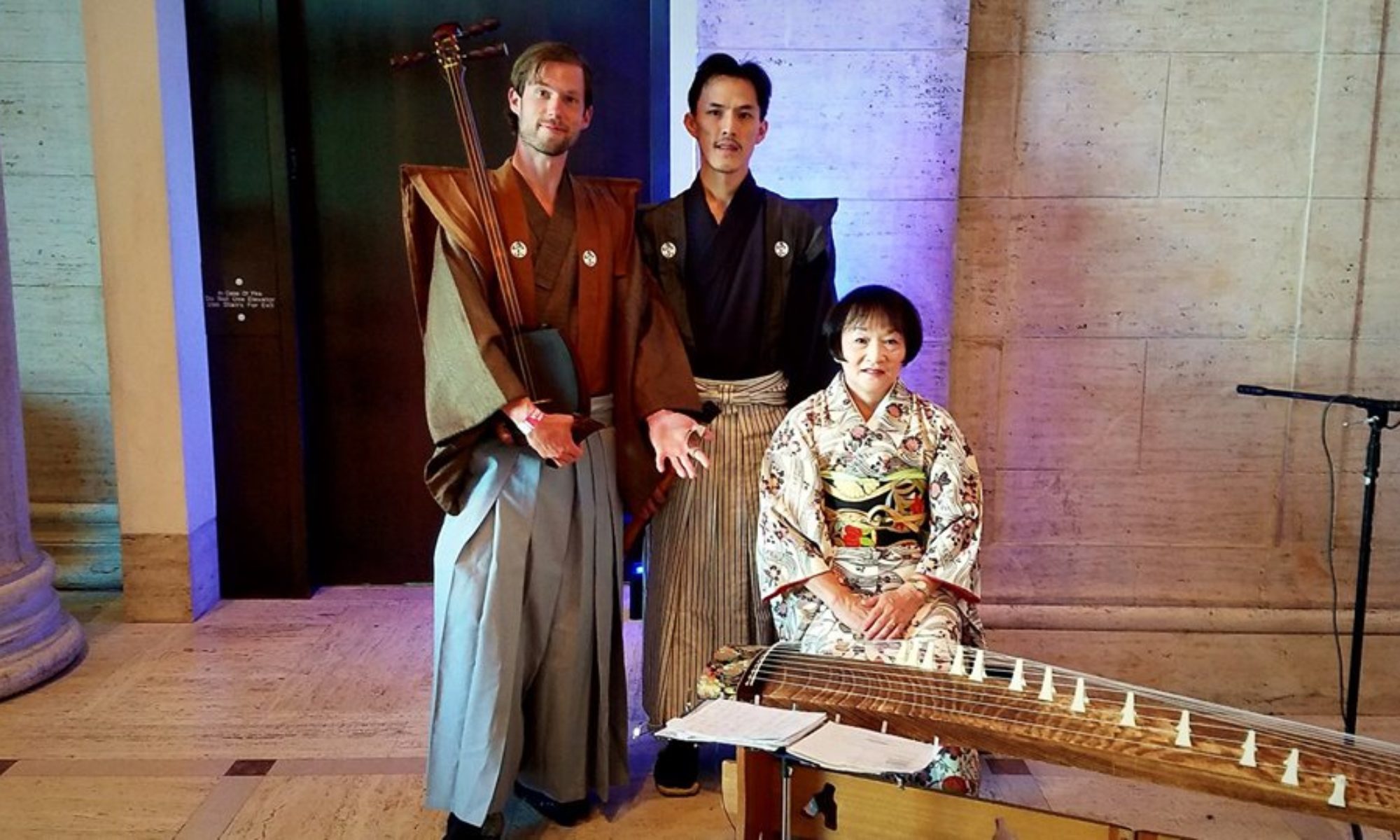August 11, 2020, Tuesday at 8pm(PT). You may watch our Live Peace Day event
 NextGen JCA Peace Day: 75 years after the Bombings of Hiroshima & Nagasaki
NextGen JCA Peace Day: 75 years after the Bombings of Hiroshima & Nagasaki
Join us as we commemorate this Peace Day, with an evening of:
 Read this first hand description of Jack Dairiki’s encounter with the atomic bomb. Jack is holding a drawing he made to illustrate his memory of the Hiroshima atomic bombing.
Read this first hand description of Jack Dairiki’s encounter with the atomic bomb. Jack is holding a drawing he made to illustrate his memory of the Hiroshima atomic bombing.
Jack M. Dairiki – “Hibaku Sha”
(A-Bomb Survivor) – July 6, 2015
In Hiroshima City’s “Atomic Peace Park,” there is a poem carved into a rock which states, “Please rest in peace for this error shall never be repeated again.” It is a pledge to all living people of the world to protect all humanity. I am one such person that witnessed the holocaust 3-1/2 miles from the Atomic Bomb detonation point.
I traveled to Hiroshima, Japan August 1941 with my father as a summer vacation to visit my ailing grandfather. Unfortunately, we were stranded there in September of that year. Finding no passage to return to Sacramento to attend Lincoln Grammar School, Fifth Grade, my father and I were separated from my mother and four siblings who where interned into Tule Lake,CA, Jerome and Rowher, AR, and finally into Amache, CO camps.
I, along with my classmates, were conscripted to work for the Japan War Effort (“Gakuto Do In”) at Toyo Factory. I was a 14-year-old student. We worked there from January 1945 until the Atomic Bomb was dropped on August 06. On that fateful day, because of air bombing raids, my commute train from home (about 9 miles from Hiroshima City) to Toyo Factory was delayed by 15 minutes. That delay saved me and my classmates from being in Hiroshima City. We were taking roll call at 08:15 when the bomb was detonated.
We noted three B-29 bombers traveling towards Hiroshima. It was shortly after that sighting that we experienced the horrific explosion of the first Atomic Bomb. First, a blinding flash and a horrific blast of wind that took out 99% of the Toyo Factory windows. I felt my body being uplifted by this wind. When I opened my eyes, I was in the midst of dust and smoke and could not see my hands. Then, I heard a fellow student run toward the bomb shelter which was a few hundred yards away; the entrance was at a higher elevation. Perhaps 30 seconds elapsed at that moment. I looked back into the city and saw the monstrous fire column rising into the air, thousands of feet into the air above Hiroshima City. The whole city was on fire, covered in smoke and fire with no buildings to be seen.
An hour later we peeked out from the cave shelter and witnessed the first victim. A young woman walking with her arms extended — her ragged clothes hanging from her extended arm and her hair burned off. She was looking straight ahead and walked like a ghost. We noticed as she came closer that it was not her burned clothes — it was her skin hanging from her arms.
We were instructed to return home if we were able to walk. I boarded a ghost train where the paint had burned off and windows shattered. Inside, the train had many injured people asking for medical aid. I could not help them so I dismounted from the train to walk home, a distance of 10 miles. My grandmother welcomed me — she was scanning the horizon for my return. The house was not damaged, except all the sliding doors were down but unbroken.
There were 55 hospitals, 200 doctors and 2,000 nurses in Hiroshima City before the bomb. What remained were 3 hospitals, 20 doctors, and 170 nurses to help the wounded. I saw that there were 80,000 people who died in the city and near me — I can never forget the image nor the smell of death.
I was honored with a “Certificate of Special Congressional Recognition and Peace Award”, signed by Congresswomen Nancy Pelosi, and awarded thru the National Japanese American Historical Society of San Francisco on May 03, 2015, during its Annual Tribute Award event for my activity in speaking about my experience and movement for peace.
